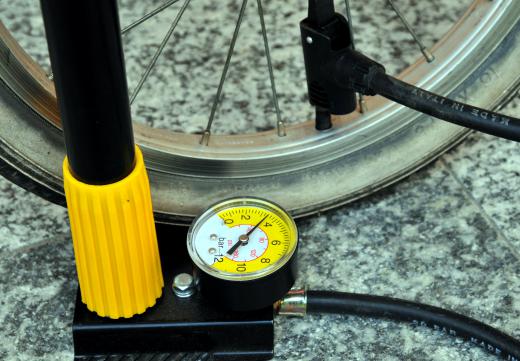A hand compressor, also known as a manual compressor, is a machine that is operated manually for the purpose of compressing a gas for some function. It generally consists of a tube or chamber into which the gas is introduced and a handle or plunger that is used to compress the gas. One common use of a hand compressor is in a device used to spray chemicals such as pesticides.
Compressors are used in many types of machines, such as chemical sprayers, air-conditioning or refrigeration units and apparatuses used to fill divers' air tanks. What hand compressors have in common with all compressors is that they take a gas of some type and use some kind of force to increase the pressure of that gas, usually by decreasing its volume. The gas is introduced into a chamber, and a mechanical element is used to make the space within the chamber smaller, forcing the gas to occupy less space, thus increasing the pressure of the gas. Pressure generally is measured in a weight-to-area ratio, such as pounds per square inch or kilograms per centimeter.

The three main types of compressors are reciprocating compressors, rotary screw compressors and centrifugal compressors. A hand compressor generally is classified as a reciprocating compressor, because it uses a piston to decrease the volume of a gas. Rotary screw compressors use two rotors to complete the compression process. Centrifugal compressors are slightly different because they use an impeller to add velocity to the gas, then they convert the velocity to pressure. Centrifugal compressors are often found in industrial applications such as gas turbines.
Different compressor types have differing capabilities in creating varying degrees of pressure. Hand compressors generally create less pressure than machines using electricity or other energy to drive the compressing process. The advantage that hand compressors have is portability, in that they can usually be carried by a single person, and they can be used in areas where electricity is not ready available. There are, however, handheld compressors that are portable and utilize electric current to create greater pressures, usually by being plugged into a wall socket.
The most common use of compressors is to compress air. An example of a hand compressor used for this purpose is a basic bicycle pump. The pump uses the mechanical force applied to the handle to compress the air in the chamber and force it out the bottom of the tubing and into the bicycle tire. Automobile tires generally require higher pressures to inflate them properly, so most car tire compressors are electric.
